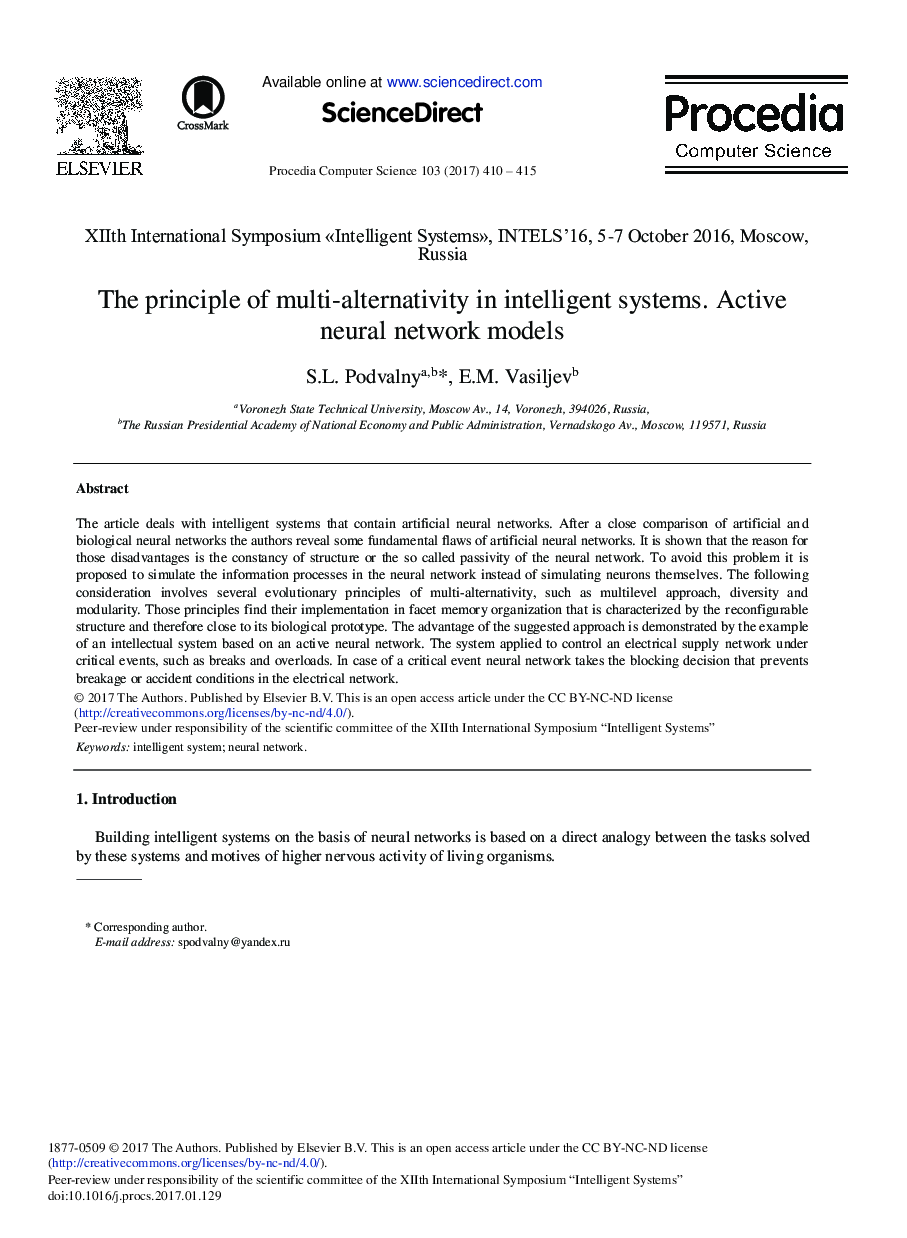| Article ID | Journal | Published Year | Pages | File Type |
|---|---|---|---|---|
| 4961488 | Procedia Computer Science | 2017 | 6 Pages |
Abstract
The article deals with intelligent systems that contain artificial neural networks. After a close comparison of artificial and biological neural networks the authors reveal some fundamental flaws of artificial neural networks. It is shown that the reason for those disadvantages is the constancy of structure or the so called passivity of the neural network. To avoid this problem it is proposed to simulate the information processes in the neural network instead of simulating neurons themselves. The following consideration involves several evolutionary principles of multi-alternativity, such as multilevel approach, diversity and modularity. Those principles find their implementation in facet memory organization that is characterized by the reconfigurable structure and therefore close to its biological prototype. The advantage of the suggested approach is demonstrated by the example of an intellectual system based on an active neural network. The system applied to control an electrical supply network under critical events, such as breaks and overloads. In case of a critical event neural network takes the blocking decision that prevents breakage or accident conditions in the electrical network.
Keywords
Related Topics
Physical Sciences and Engineering
Computer Science
Computer Science (General)
Authors
S.L. Podvalny, E.M. Vasiljev,
